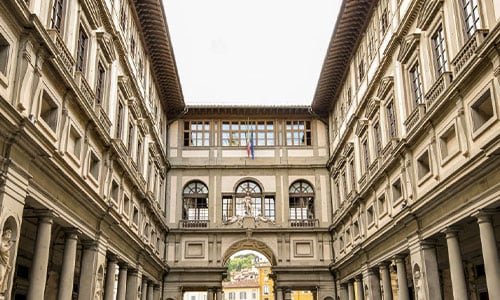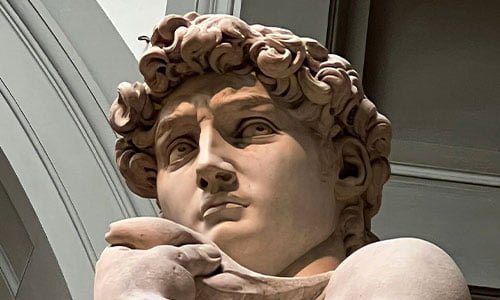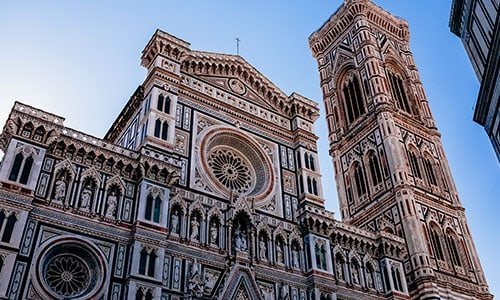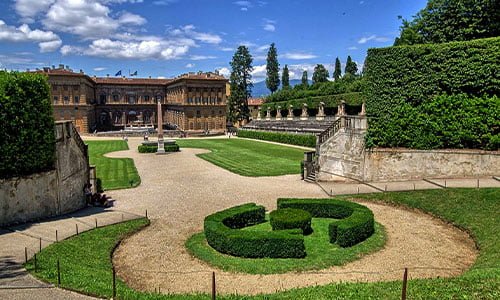the bargello national museum
Besides the Uffizi Gallery and Pitti Palace, the Bargello Museum or Museo Nazionale del Bargello is one of Florence’s most important museums. It was formerly a barracks and prison in Florence, Italy, until it became an art museum. The Museum holds one of the most important collections of Renaissance Tuscan sculpture, including works by Donatello, Della Robbia, Verrocchio, and Michelangelo, as well as medieval French ivories, Italian majolicas, and arms.


History of the Bargello Museum
After Grand Duke Pietro Leopoldo abolished capital punishment in 1786, the Bargello was used as a prison. Consequently, executions were no longer performed at the Bargello from this point forward. Until 1859, the Bargello served as the headquarters of the Florentine police. As a result of Pietro Leopoldo II’s exile, the makeshift Governor of Tuscany decided that the Bargello should become a museum instead of a jail.
There is an external staircase leading to the second floor of the Bargello, which was designed around an open courtyard. The courtyard is centered by an open well.
The Bargello Museum opened in 1865, displaying the largest Italian collection of Gothic and Renaissance sculptures (14-17th century). Donatello, Luca della Robbia, Verrocchio, Michelangelo, and Cellini all contributed masterpieces to this museum.
As well as sculptures, the Bargello contains a large collection of decorative and applied arts, including oriental goods, manuscripts, textiles, majolica, ivories, jewels, weapons, carpets, glassware, etc. As the Italian collection at Bargello was largely academically based in the form of paintings and sculptures, these artifacts greatly enhance it. Louis Carrand, Giulio Franchetti, Stefano Bardini, and Frederick Stibbert donated most of the collection around the 19th century, after the Medici family began it.
The Bargello Tower
The Bargello Tower embodies the grandeur of the Palazzo. Along with the Arnolfo Tower in Palazzo Vecchio, they symbolize the two powers of medieval Florence. The Podestà, during the communal Florence era, held functions similar to those of the current President of the Constitutional Court.
With the rise of Medici power, the Podestà’s palace became the Bargello Palace, where criminal justice was administered, including trials, legalized torture, and death sentences with their corresponding executions. The Bargello Museum became a site of pain and despair until 1782 when all torture instruments were burned in the inner Courtyard. Finally, in 1786, the Grand Duchy of Tuscany became the first state to abolish capital punishment.

Florence as the Capital and the Establishment of the Museum
With the advent of Florence as the capital in 1865, coinciding with the centenary of Dante’s birth, the Provisional Government of Tuscany decided to establish the first National Museum to safeguard the masterpieces of the great Italian Renaissance sculpture, mainly works by Donatello and Michelangelo.
The Bargello Museum thus became the Museum of Sculpture and Decorative Arts.
National Museum of the Bargello – What to See
The Bargello artworks span all palace floors, including the Courtyard and the Verone.
The ground floor is dominated by Michelangelo and his Bacco (Bacchus): the sculpture depicts a drunken and staggering Bacchus, accompanied by a mischievous child satyr who secretly bites into a grape. It results from the encounter between the twenty-year-old sculptor and the beauty of antiquity admired first in the Gardens of San Marco in Florence and later during his stay in Rome.
Other essential works on the ground floor of the Bargello include the Madonna and Child (Pitti Tondo), the Ganymede, and the portrayal of Cosimo by Cellini, the celebration of Florence’s victory over Pisa by Giambologna, and Leda and the Swan by Bartolomeo Ammannati.
The Donatello Room
On the first floor, we find the Donatello Room, where one can fully understand the genesis of the Florentine Renaissance. Here we encounter Donatello’s David, a bronze masterpiece that surprises us with its originality and innovative strength compared to the period in which it was created (1435-1440).
The need for more documents has always led to debate regarding its commission, chronology, ideology, and symbolism. Nineteenth-century sources place it in the center of the Courtyard of the Medici Palace (in via Larga) for the marriage of Lorenzo the Magnificent and Clarice Orsini. Vasari later mentions it at the center of the Courtyard in Palazzo Vecchio.
A few years later, we have Verrocchio’s David, a different interpretation where young and vibrant David proudly revels in his victory. It is both a cruel and charming representation. Then there’s Donatello’s San Giorgio, commissioned by one of the minor guilds, the Swordmakers and Armorers, and destined for Orsanmichele.
Finally, there’s Donatello’s marble David, commissioned in 1408 for the apse of the Santa Maria del Fiore. It was never placed on the buttress of the tribune, and in 1416, it was sent to Palazzo Vecchio, where the artist modified it to make it bold and proud.



bargello museum tickets and hours
OPENING HOURS
8:15 – 13:50 (Mon – Wed – Thu – Fri – Sat – Sun)
CLOSING DAYS
Tuesdays, second and fourth Sunday of the month.
ADDITIONAL OPENING HOURS
Sunday 14 August: 9:00 – 13:00
Sunday 11 September: 14:00 – 18:00
Sunday 25 September: 9:15 – 13:15
TICKETS
Full price: € 9,00
Reduced price: € 2,00 (visitors between 18 and 25 years old)
Reservation Fee: € 3,00. For phone bookings. please call Firenze Musei: Tel. +39 055 294883
QUESTIONS AND ANSWERS
How long does the Bargello museum take?
It depends on how much you are interested in studying art. There are three floors in the museum. The average tourist can get a good overview in one to two hours.
What is Bargello in Italy?
Bargello was a former barracks and prison, now an art museum in Florence, also known as Palazzo del Bargello and Museo Nazionale del Bargello.
Where is David by Donatello?
Sculpted around 1440 by Donatello, David, or Mercury, is a bronze sculpture displayed in Florence’s Bargello Museum.
How many years has bargello museum been open?
The Bargello National Museum, established in 1859, occupies the building, making it the first national museum in a unified Italy. It serves as a magnificent home for numerous significant Renaissance sculptures and masterpieces of the minor arts spanning different eras. Among its treasures are exceptional works by renowned artists such as Donatello, Luca della Robbia, Verrocchio, Michelangelo, and Cellini.
Is bargello museum good for kids?
The Bargello, characterized by its fortified exterior and expansive open spaces adorned with numerous coats of arms, will spark your children’s imagination. This museum boasts a remarkable assortment of sculptures crafted by Donatello and Michelangelo. Additionally, it houses various attractions that will captivate families, including a collection of bronze animals. Most notably, visitors can explore an extraordinary assemblage of Renaissance weapons on the third floor. Undoubtedly, boys of all ages find this section particularly thrilling and engaging.
Is the bargello national museum free on first sundys?
Yes. The Bargello, a State museum, offers 20 free admission days annually. Visitors can enjoy complimentary entry from October to March on the first Sunday of each month.
USEFUL INFORMATION
Opening days and times 2025
8:15 – 13:50 (Mon – Wed – Thu – Fri – Sat – Sun)
Tuesdays, the second and fourth Sunday of the month
Ticket Price
Full price: € 9,00
Reduced price: € 2,00 (visitors between 18 and 25 years old)
How to get there
Address – Via del Proconsolo, 4 – 50122 Firenze



